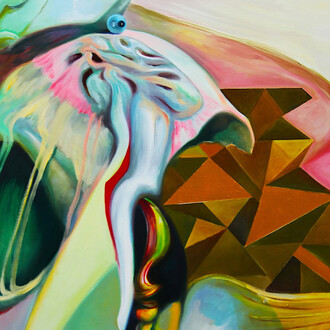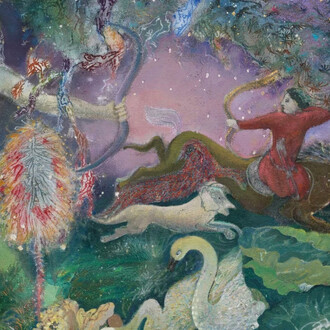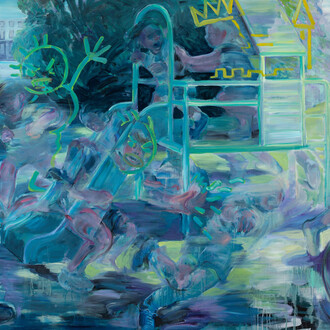Palo Gallery is pleased to present Tim Noble: Happy land at the gallery’s flagship location at 30 Bond Street in New York City. This will be the London-based artist’s first solo exhibition with the gallery. The exhibition will feature a series of 17 new jesmonite relief panels of varying size and a large-scale installation made from wooden shards covered in gold leaf. Happy Land will open with a public reception Friday, November 1 from 6 to 8 PM, and will be on view from November 2 through December 21, 2024.
Contorted bodies, bacterial cells, household objects, food, plants, and religious and medieval historical symbols mingle in scenes loaded with the language of Hieronymus Bosch, Bruegel, and the Surrealists. Noble marries his signature language with our spectacle of 21st-century internet media consumption. Contemporary social media displaying the widest range of humanity from joy, absurdity, lewdness to dysmorphia are all on display within Noble’s monochrome white panels. The total rendition of our 21st-century internet culture in this all out affront gives us an opportunity to step back and admire the churning absurdity and beauty of the soil we currently inhabit.
Noble explores the fundamental absurdity and depravity of humanity in the face of 21st-century culture in the context of our broader history. His choice of reliefs as a medium reflects on the oldest forms of art-making in caves and on temple walls in Ancient Assyria, Greece, and Egypt. Noble subverts these cultural references that we often depict as pure and idealized by showing the reality of extreme violence, depravity, comedy, and realistic humanity. Thinking of the phalluses carved into the streets of Pompeii, the not uncommon perversion of ancient Greek mythology, and Assyrian stele dedicated to acts of near genocide, one can see that the language and themes Noble embraces in his reliefs are nothing new, but rather radically and honestly reconsidered.
Noble’s exploration of the great bacchanal of history and our contemporary culture are made ever more potent through his choice of color. The pure white of each panel alludes directly to some of history’s most worshiped and obsessed-over artifacts: ancient Greek sculptures and Acropolis marbles. Race-motivated historians such as Johann Joachim Winkleman (1717-1768) obsessed over such (once chromatic) sculptures as the purest and most perfect form of art and culture. Winkleman’s opinions were both pioneering and influential, directing popular taste towards classical art. Noble takes the irony of this white marble worship and uses its false perspective of civility to feed the viewer an uncut and raw version of human behavior, desire, madness, hilarity, and drama. The artist’s incorporation of gold leaf, historically a symbol of religious sanctity and divinity, enrobes the relief panels, conveying the contradiction between the purity of the white jesmonite and the chaos of the imagery.
















